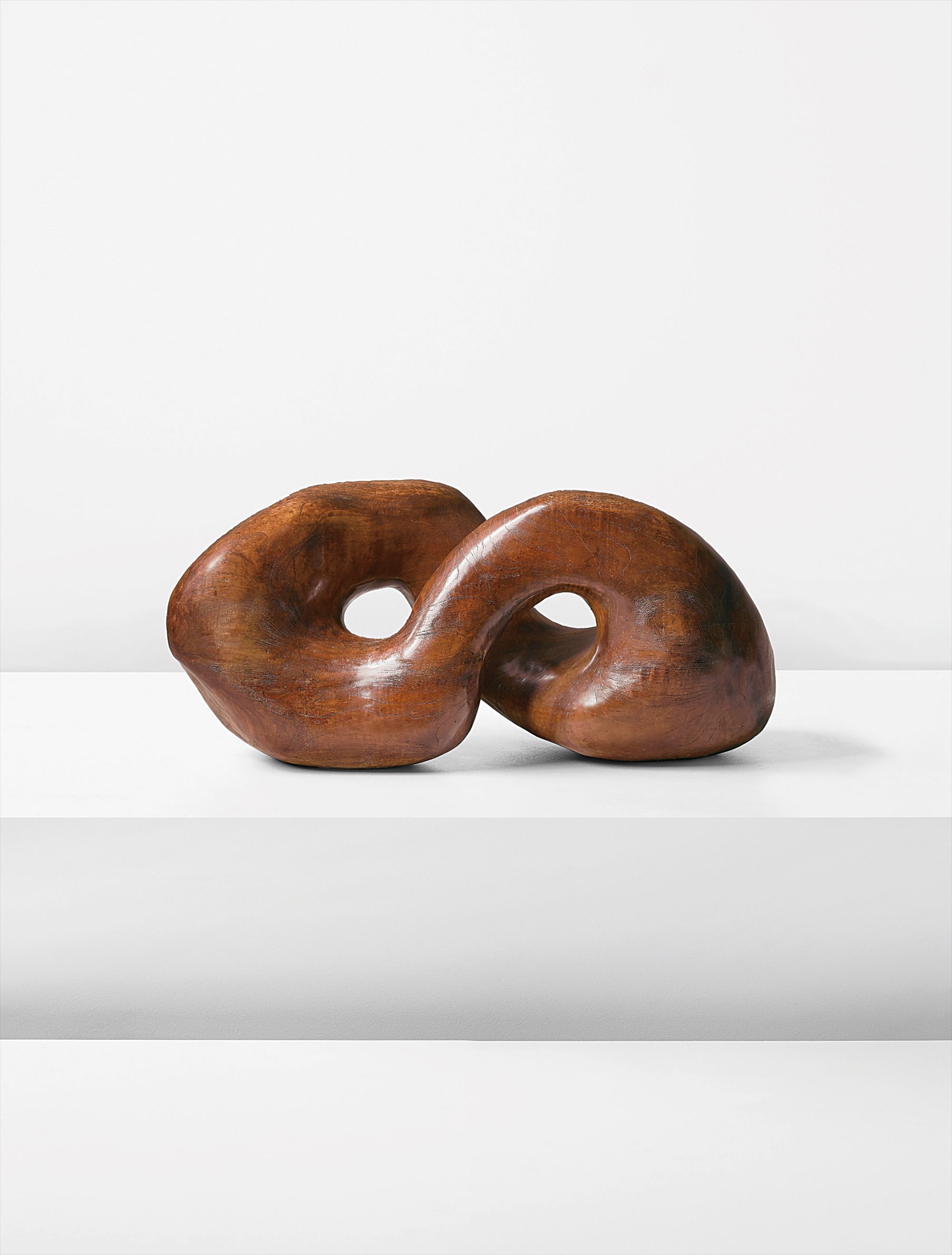

PROPERTY FROM A PRIVATE COLLECTION, THE NETHERLANDS
11
Alexandre Noll
Untitled
circa 1950
Elm.
41.9 x 93 x 33.3 cm (16 1/2 x 36 5/8 x 13 1/8 in.)
Incised with ANoll.
Full-Cataloguing
Alexandre Noll discovered woodcarving during the First World War as a French Air Force conscript camped in the Dardanelles. Following the war Noll began his career as an artist in the commercial environment of department stores, and quickly attracted attention from established designers of the period such as Paul Poiret, who commissioned him to design decorative objects and household goods. An artist at heart, Noll focused attention on his sculptures during the postwar years, producing a small number of large-scale works in the late 1940s and 1950s. Many of these have an ellipse form, most typically in a vertical format and more rarely horizontal as seen in the present lot.
In recent years Noll the sculptor has come to be considered within the context of his contemporaries such as Henry Moore, Jean Arp, and Barbara Hepworth. His sculptures continue to stand apart in that their naturalistic abstraction is as much derived from the properties of the material and his own hand as it is through form. Noll demanded that his work reflects the inherent qualities of the block of wood from which they were carved. Speaking to the connection between artist and material, Olivier Jean-Elie and Pierre Passebon wrote that ‘it was the sculpture’s nature that acted as model, and the decision to sculpt derived directly from the choice of a particular wood’. (Alexandre Noll, Paris, 1999, p. 70) Ultimately, Noll’s sculptures appeal due to their combination of human skill, spectacular forms and nature's innate artistry.
The present lot, a massive three-dimensional symbol of infinity, is captivating in its scale and execution. With obvious physical appeal to a sculptor of Noll’s ability, the ellipse form also holds layered symbolic significance. The infinity symbol was invented in 1655, but the concept has earlier origins and broad mythological, astronomical and mathematical meanings. This sort of pursuit of an essential meaning originated in the belief, so central to post-World War II abstraction, that art’s purpose was to distill universal truths. Noll might have called these truths ‘absolute[s] of nature’, and his effort to unlock them informs every sculpture. For Noll, the associations of the infinity symbol to his own practice would have been quite immediate. Mobius strips, unbroken lines, infinite multiplication: these words are all invoked by the concentric rings and swirling grains of wood. The concept of infinity further relates closely to the artist's experience of exploring variants of the same theme with the determination to create objects of eternal value. Here Noll has portrayed one of the most universal of artist’s subjects: a reclining female form.
In recent years Noll the sculptor has come to be considered within the context of his contemporaries such as Henry Moore, Jean Arp, and Barbara Hepworth. His sculptures continue to stand apart in that their naturalistic abstraction is as much derived from the properties of the material and his own hand as it is through form. Noll demanded that his work reflects the inherent qualities of the block of wood from which they were carved. Speaking to the connection between artist and material, Olivier Jean-Elie and Pierre Passebon wrote that ‘it was the sculpture’s nature that acted as model, and the decision to sculpt derived directly from the choice of a particular wood’. (Alexandre Noll, Paris, 1999, p. 70) Ultimately, Noll’s sculptures appeal due to their combination of human skill, spectacular forms and nature's innate artistry.
The present lot, a massive three-dimensional symbol of infinity, is captivating in its scale and execution. With obvious physical appeal to a sculptor of Noll’s ability, the ellipse form also holds layered symbolic significance. The infinity symbol was invented in 1655, but the concept has earlier origins and broad mythological, astronomical and mathematical meanings. This sort of pursuit of an essential meaning originated in the belief, so central to post-World War II abstraction, that art’s purpose was to distill universal truths. Noll might have called these truths ‘absolute[s] of nature’, and his effort to unlock them informs every sculpture. For Noll, the associations of the infinity symbol to his own practice would have been quite immediate. Mobius strips, unbroken lines, infinite multiplication: these words are all invoked by the concentric rings and swirling grains of wood. The concept of infinity further relates closely to the artist's experience of exploring variants of the same theme with the determination to create objects of eternal value. Here Noll has portrayed one of the most universal of artist’s subjects: a reclining female form.